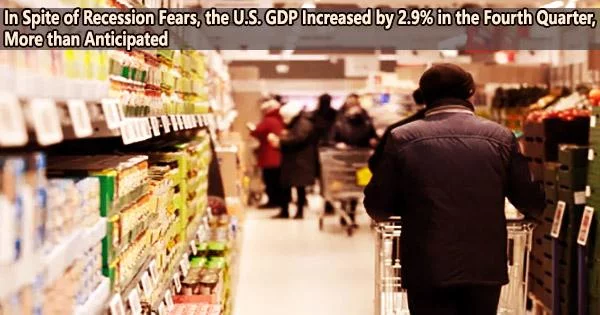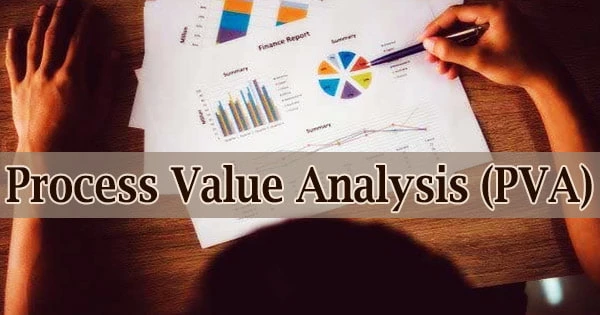Even if there are still uncertainties on whether growth would turn negative in the upcoming year, the U.S. economy ended 2022 in good form.
The total amount of goods and services produced from October to December, or the fourth quarter’s gross domestic product (GDP), increased at a 2.9% annualized rate, according to data released on Thursday (January 26, 2023) by the Commerce Department. Economists surveyed by Dow Jones had expected a reading of 2.8%.
The growth rate was slightly slower than the 3.2% pace in the third quarter.
Stocks turned mixed following the report while Treasury yields were mostly higher.
Consumer expenditure, which makes up approximately 68% of the GDP, rose by 2.1% throughout the period, a slightly slower increase than the previous period’s 2.3% gain but still positive.
After reaching 41-year highs in the summer, inflation measurements significantly decreased by the end of the year. In line with forecasts, although significantly less than the 4.8% increase seen in the third quarter, the personal consumption expenditures price index climbed by 3.2%. Excluding food and energy, the chain-weighted index rose 3.9%, down from 4.7%.
While the inflation numbers indicated price increases are receding, they remain well above the Federal Reserve’s 2% target.
Along with the increase in consumer expenditure, the GDP total was also aided by rises in private inventory investment, government spending, and nonresidential fixed investment.
A 26.7% plunge in residential fixed investment, reflecting a sharp slide in housing, served as a drag on the growth number, as did a 1.3% decline in exports. The housing drop subtracted about 1.3 percentage points from the headline GDP number.
Federal government spending rose 6.2%, due largely to an 11.2% surge on nondefense outlays, while state and local expenditures were up 2.3%. Government spending in total added 0.64 percentage points to GDP.
Inventory increases also played a significant role, adding nearly 1.5 percentage points.
“The mix of growth was discouraging, and the monthly data suggest the economy lost momentum as the fourth quarter went on,” wrote Andrew Hunter, senior U.S. economist for Capital Economics. “We still expect the lagged impact of the surge in interest rates to push the economy into a mild recession in the first half of this year.”
The report caps off a volatile year for the economy.
Following a 2021 that saw GDP rise at its strongest pace since 1984, the first two quarters of 2022 started off with negative growth, matching a commonly held definition of a recession. However, the final two quarters of growth turned positive, giving hope for 2023 thanks to a sturdy consumer and a robust job market.
“Just as the economy wasn’t as weak in the first half of 2022 as GDP reports suggested, it’s also not as strong as the Q4 GDP release would indicate,” said Jim Baird, chief investment officer at Plante Moran Financial Advisors. “Held aloft by resilient consumer spending, the economy expanded at a solid pace late last year, but remains vulnerable to a more pronounced slowdown in the coming quarters.”
A separate economic report Thursday highlighted a strong, tight labor market. Weekly jobless claims fell by 6,000, down to 186,000 for the lowest reading since April 2022 and well below the 205,000 Dow Jones estimate.
Additionally, orders for durable goods outperformed expectations, increasing 5.6% in December as opposed to the 2.4% forecast. The headline number was boosted by demand for Boeing passenger planes, although orders declined by 0.1% when transportation was excluded.
The majority of economists believe a recession is likely this year despite the generally positive economic indicators.
This year, the Fed is predicted to raise interest rates aggressively in an effort to rein in spiraling prices. The Fed raised its benchmark borrowing rate by 4.25 percentage points since March 2022 to its highest rate since late 2007. Rate hikes generally operate on lags, meaning their real effect may not be felt until the time ahead.
Markets expect the Fed to raise interest rates by another quarter of a point at its meeting next week, and then probably raise rates again by a similar amount in March.
Some sectors of the economy have shown signs of recession even though overall growth has been positive. Housing in particular has been a laggard, with building permits down 30% in December from a year ago and starts down 22%.
Corporate profit reports from the fourth quarter also are signaling a potential earnings recession. With nearly 20% of the S&P 500 companies reporting, earnings are tracking at a loss of 3%, even with revenue growing 4.1%, according to Refinitiv.
Consumer spending also is showing signs of weakening, with retail sales down 1.1% in December.
















